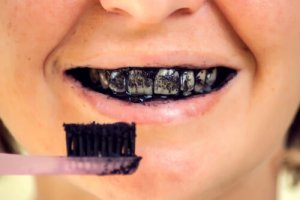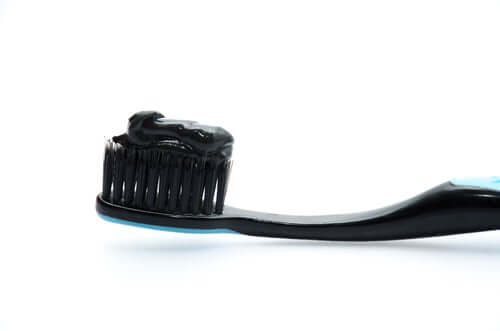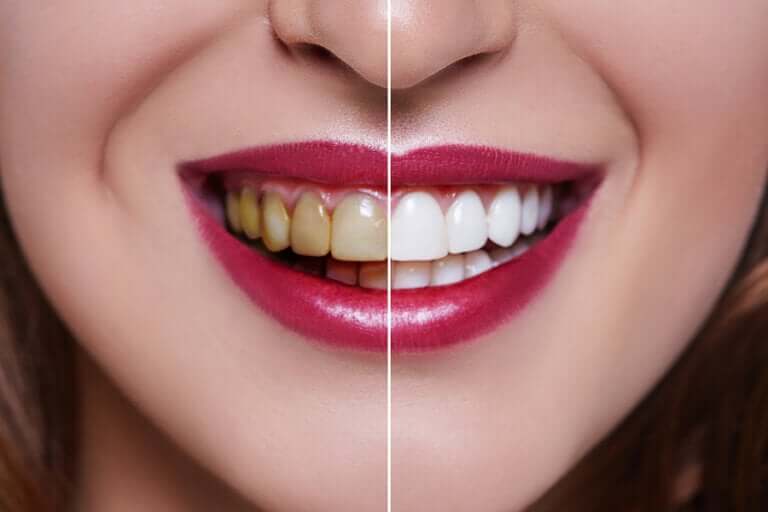Risks of Activated Charcoal for Oral Health

Recently, videos and posts have appeared from various influencers talking about the supposed properties of activated charcoal to help whiten teeth. Several dentists, including the president of the General Dental Council, Óscar Castro Reino, have strongly denied this information.
Castro Reino pointed out that the claims that activated charcoal whitens teeth are not only false, but also have serious risks for oral health. Additionally, he emphasizes the importance of consulting oral health professionals instead of listening to viral posts on the internet.
He also added that activated charcoal is a highly abrasive substance. Therefore, it can cause severe tooth problems. Also, he pointed out that it’s like brushing your teeth with sandpaper. However, the worst thing is that it doesn’t even help whiten your teeth.
Risks of activated charcoal
Dr. Reino stated that activated charcoal is a substance that you get from a chemical process with a coconut shell. This material is extremely aggressive. Then, when applied to teeth, it can significantly wear down tooth enamel.
Worn tooth enamel has lots of risks. First, the nerves are more unprotected, and this causes dental sensitivity, Also, activated charcoal is so aggressive that it can also reach your gums.
The most paradoxical thing is that, by rubbing activated charcoal on your teeth and wearing down the enamel, what remains is a layer called dentin. In fact, dentin is more yellowish than natural enamel. In other words, not only are there risks of activated charcoal, but it doesn’t even whiten your teeth.

Keep reading: 3 Effective Home Treatments for Removing Tartar from Your Teeth
What do the viral videos show?
There are lots of videos of influencers showing before and after using activated charcoal. You can see them apply activated charcoal to yellowish teeth. Then, after rinsing it, it looks as if the teeth have an incredible white color.
However, what really happens with those images is a very basic visual effect. With charcoal, teeth look black. When rinsing them, the contrast with the previous image will suddenly make them appear whiter. However, they aren’t actually whiter.
For Dr. Óscar Castro, it’s clear that this information is completely false. Unfortunately, it makes a strong impression on viewers, so they think it’s an effective treatment. We can see that they’re showing misleading evidence that makes the audience believe them.
Tooth color
The expert also insisted that teeth don’t normally have that shade of white – the natural shade of teeth is ivory. Genetic factors and consuming other substances cause this natural color to change. For example, tea, coffee, or tobacco.
Not having ultra white teeth doesn’t mean that there are hygiene problems or that there’s a defect. It’s just normal. Castro emphasized that what’s important is oral health, not the deceptive aesthetic effects that are dangerous.
It’s best to brush your teeth at least twice a day with a toothpaste that contains fluoride. Also, go to the dentist periodically and follow his instructions. The dentist is the ideal professional to apply teeth whitening procedures.

Find out more: 9 Natural and Effective Tips for Taking Care of Your Teeth
Teeth whitening doesn’t use activated charcoal
We must insist on something very important: any processes on your teeth must be supervised by an oral health professional. Don’t listen to what influencers or non-professional pages say is true.
Dentists are qualified professionals. Not only can they do teeth whitening processes, but they also assess each patient’s oral health before carrying out any treatment. For example, if there are gum problems, cavities or other problems, bleaching might be risky.
Teeth whitening procedures must be planned, and they also require careful monitoring. That way, you don’t have unwanted consequences. Likewise, patients need to know about the possible risks of this procedure.
All cited sources were thoroughly reviewed by our team to ensure their quality, reliability, currency, and validity. The bibliography of this article was considered reliable and of academic or scientific accuracy.
Rodríguez, S. B. V., Sánchez, J. A. A., Beltrán, M. D. J. T., & Álvarez, J. J. R. 20. Blanqueamiento dental. principios básicos de endodoncia clínica, 215.
This text is provided for informational purposes only and does not replace consultation with a professional. If in doubt, consult your specialist.








